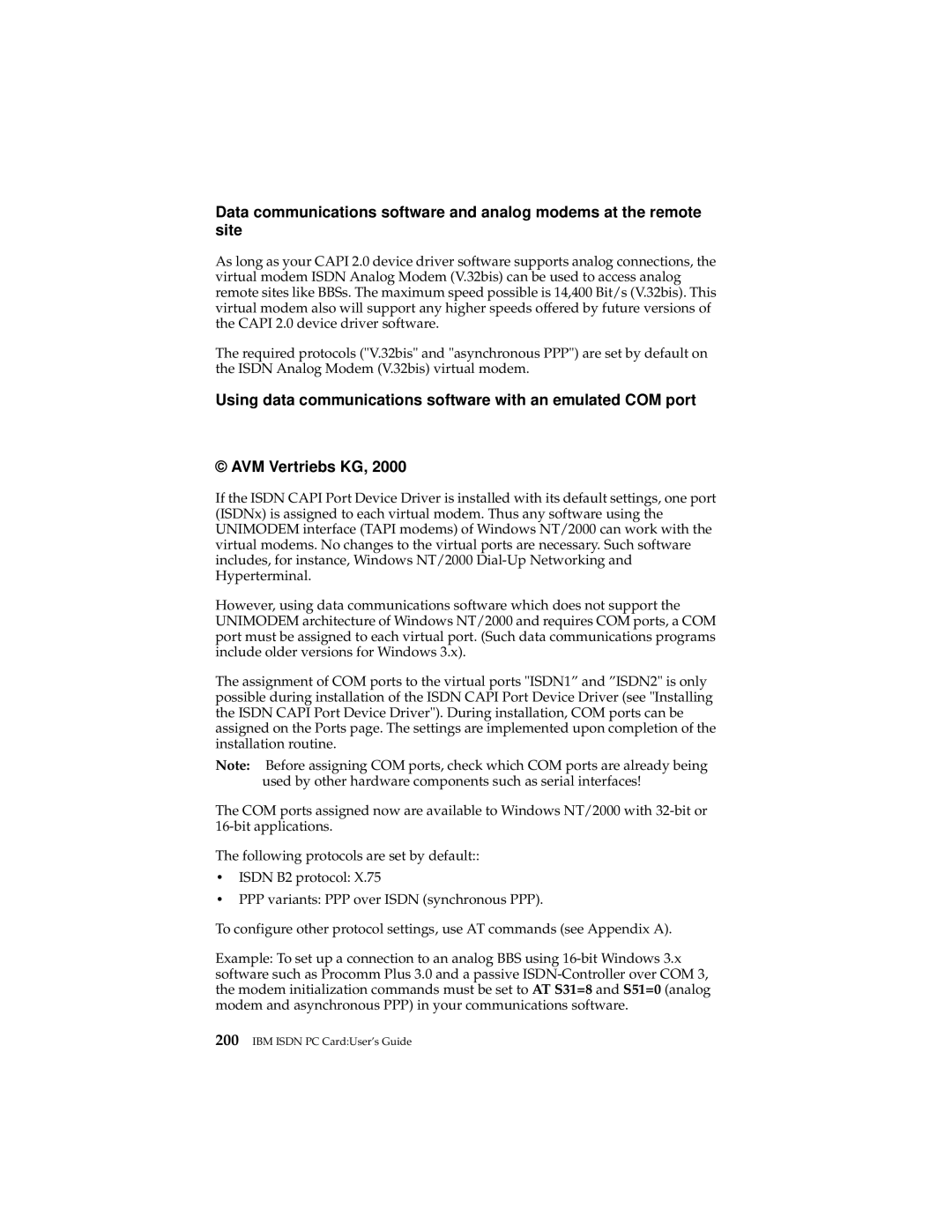Data communications software and analog modems at the remote site
As long as your CAPI 2.0 device driver software supports analog connections, the virtual modem ISDN Analog Modem (V.32bis) can be used to access analog remote sites like BBSs. The maximum speed possible is 14,400 Bit/s (V.32bis). This virtual modem also will support any higher speeds offered by future versions of the CAPI 2.0 device driver software.
The required protocols ("V.32bis" and "asynchronous PPP") are set by default on the ISDN Analog Modem (V.32bis) virtual modem.
Using data communications software with an emulated COM port
© AVM Vertriebs KG, 2000
If the ISDN CAPI Port Device Driver is installed with its default settings, one port (ISDNx) is assigned to each virtual modem. Thus any software using the UNIMODEM interface (TAPI modems) of Windows NT/2000 can work with the virtual modems. No changes to the virtual ports are necessary. Such software includes, for instance, Windows NT/2000
However, using data communications software which does not support the UNIMODEM architecture of Windows NT/2000 and requires COM ports, a COM port must be assigned to each virtual port. (Such data communications programs include older versions for Windows 3.x).
The assignment of COM ports to the virtual ports "ISDN1” and ”ISDN2" is only possible during installation of the ISDN CAPI Port Device Driver (see "Installing the ISDN CAPI Port Device Driver"). During installation, COM ports can be assigned on the Ports page. The settings are implemented upon completion of the installation routine.
Note: Before assigning COM ports, check which COM ports are already being used by other hardware components such as serial interfaces!
The COM ports assigned now are available to Windows NT/2000 with
The following protocols are set by default::
•ISDN B2 protocol: X.75
•PPP variants: PPP over ISDN (synchronous PPP).
To configure other protocol settings, use AT commands (see Appendix A).
Example: To set up a connection to an analog BBS using
